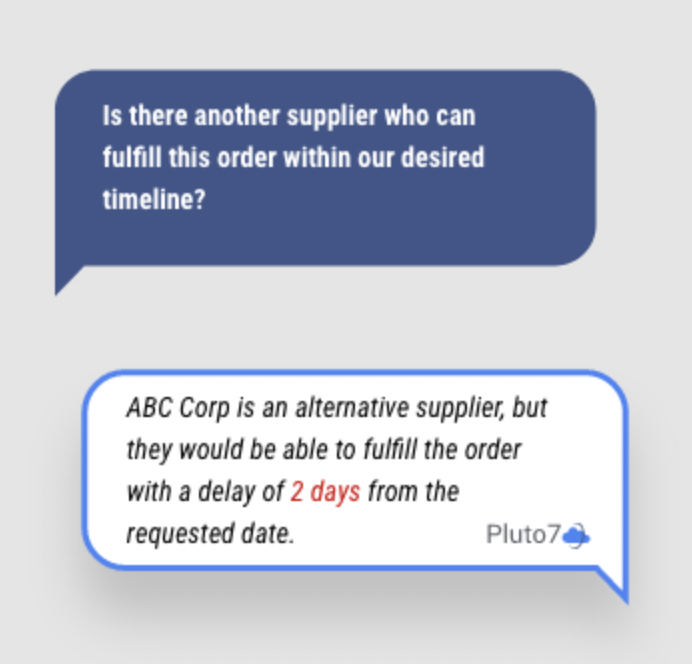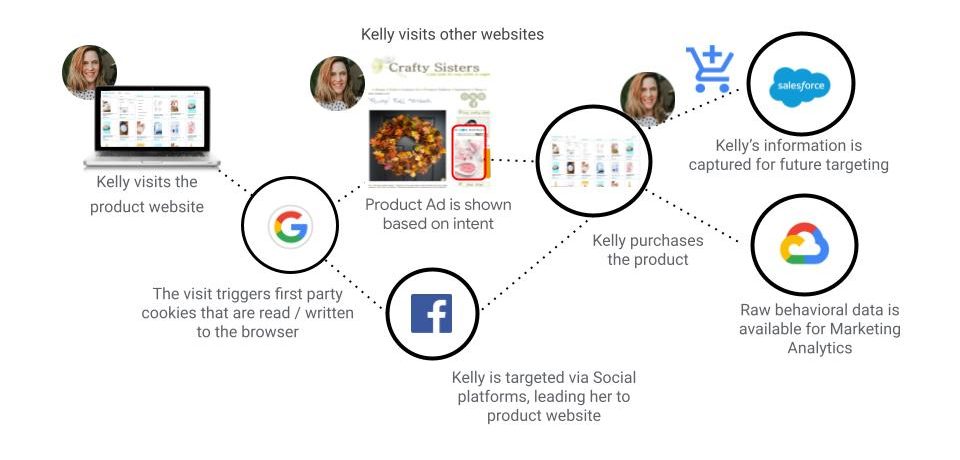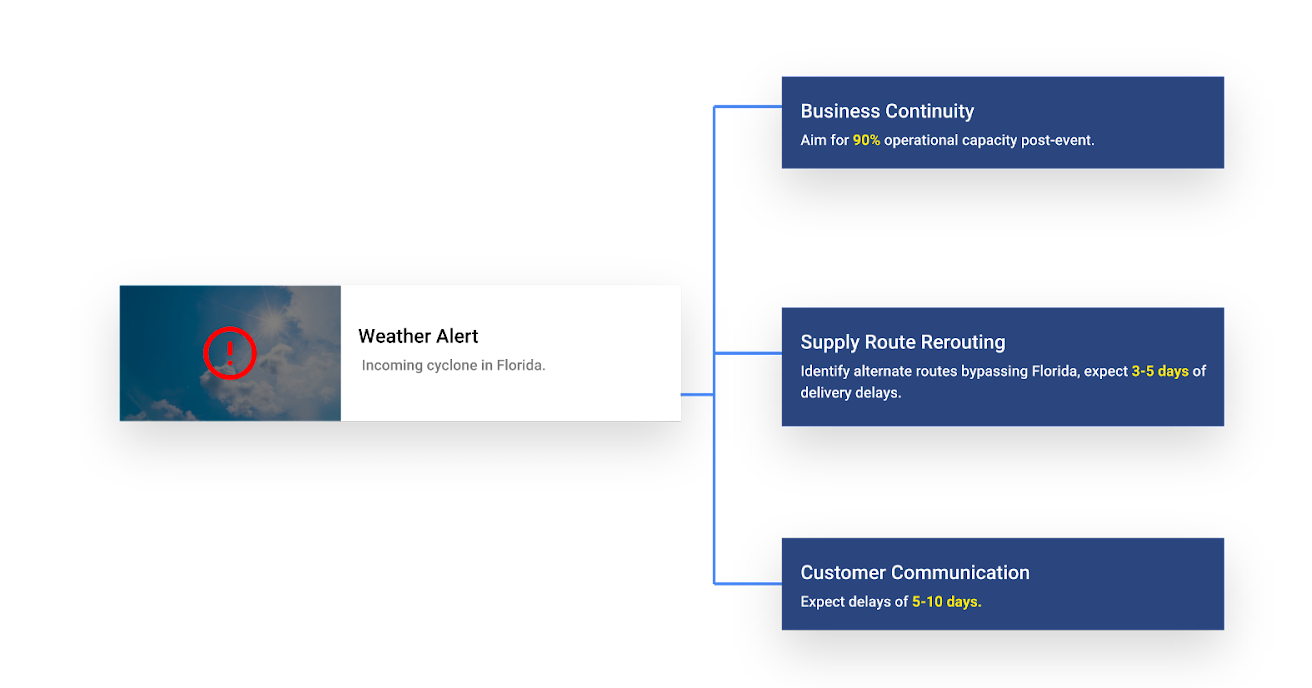
Transform Your Supply Chain Planning and Marketing Strategies with Google Cloud and SAP Integration

Transform Your Supply Chain Planning and Marketing Strategies with Google Cloud and SAP Integration
August 2, 2023 | Premangsu Bhattacharya
Blog / Your Retail Data is Worth Gold. Here’s How to Mine It: 7 Strategies for the Modern Retailer
It’s a familiar narrative: Retail giants are buckling under pressure, unable to keep up in an increasingly competitive landscape. These are the same organizations that have been pumping millions into R&D, seeking that elusive competitive edge. So, what’s going wrong?
The answer is not in the money they’re spending but in what they’re overlooking: a treasure chest of data at their disposal. A wealth of insights waiting to be unearthed, capable of transforming the way they operate, interact with customers, manage inventory, and much more.
Yet, many retailers are merely scratching the surface while the real power of their data remains untapped. So how can retailers mine this goldmine?
Enter Decision Intelligence platforms. These new-gen solutions add an intelligent layer to your business systems, helping to unify data, make sense of the vast ocean of information, and translate it into actionable insights.
Decision Intelligence platforms might sound like another heavyweight tech jargon tossed your way. But it’s not just another buzzword. Instead, imagine them as a super-intelligent version of your ERP system.
Current ERPs, like SAP, are great at many things. They can manage inventory, process transactions, handle customer relations, and keep tabs on financial data. But there are things they can’t do. For example, while your ERP can tell you how many of a particular SKU you sold last week, it can’t predict how many you’ll sell next week.
It can provide data on customer buying patterns but can’t recommend how to personalize the shopping experience for individual customers.
So, here’s the big question – how can you transform your existing retail data into a powerhouse of insights and decisions? Here are seven use cases to help you mine the gold in your data.

Data in the retail industry flows from a multitude of sources. You have sales data, customer feedback, online behavior analytics, in-store traffic, and the list goes on. While each source offers a different perspective, together, they form a coherent, comprehensive picture of your retail operations.
But making sense of this multi-source data and using it to make informed decisions is a challenge, especially when this data sits in silos, disconnected, and difficult to align.
Consider this example. Your customer, May, visits your online store and spends time browsing through the shoes section. She likes a pair, adds it to her cart, but for some reason, doesn’t go ahead with the purchase. The same customer then walks into one of your physical stores the next day and buys a different pair of shoes.
In the data world, this event creates multiple data points across online behavior analytics, sales data, and in-store traffic data. Alone, they don’t tell much.
But when these data points are brought together, you get a holistic picture of May’s buying journey. You can learn about her preferences, her decision-making process and even identify points where she might have needed some assistance.
That’s precisely what Pluto7’s Data Platform offers. By acting as a bridge between systems like Google Cloud and SAP, it can pull together disparate data sources, offering a unified, cleansed, and enriched data view. This unified view empowers you to understand your customers like May at a much granular level, enabling personalized experiences and informed decision-making.
Read Case Study: Empowered one of the largest business conglomerates in the UAE with data-driven innovations.
Unifying data is only the first step in making your retail data work harder. There are more strategies to explore, and we’ll delve into those next.



Forecasting demand accurately is crucial for maintaining the right balance of stock. Overestimate the demand, and you’re left with unsold stock eating up your storage costs. Underestimate it, and you’re staring at lost sales and disappointed customers. In both scenarios, your profitability takes a hit.
Traditionally, demand forecasting has relied on historical sales data and some educated guesswork. But with the advancements in AI, the guesswork can be significantly reduced. AI can crunch vast volumes of data in no time and consider a multitude of variables that could influence demand, from seasonal trends and market fluctuations to consumer behavior and competitor activity.
But the real breakthrough comes when AI integrates external demand signals. Read: Demand Sensing for Supply Chain Optimization.
Let’s dive a bit deeper.
Imagine you are a fashion retailer, and one of your products is ‘Cotton Summer Dresses.’ The AI platform not only analyzes the historical sales data of this product, checks for seasonal trends, and studies customer feedback but also taps into Google’s search trends to understand the latest consumer preferences.
For instance, if ‘Cotton Summer Dresses’ are trending on Google, the AI platform takes this as an external demand signal and integrates it into its prediction model.
This way, it predicts a surge in demand for ‘Cotton Summer Dresses’ in your downtown store while projecting regular demand at your suburban outlet.
This information enables you to make informed decisions about stocking the product, preventing stockouts at the downtown store, and avoiding overstocking at the suburban outlet.
Pluto7’s Demand ML solution leverages Generative and Predictive AI to enhance demand forecasting. It offers real-time, accurate demand forecasts at a granular level – by product, by store, and by region.
It allows you to ask questions and get recommendations. Here are a few examples:
The solution can generate recommendations like:
Read Case Study: A Leading American Department Store Retail Chain gained more than 85% of forecast accuracy

In an increasingly competitive retail landscape, providing a personalized shopping experience is no longer a nice-to-have; it’s a must-have. Every customer expects to be treated as an individual, not just another sales number.
But how can you provide personalized experiences to thousands, if not millions, of customers? Here’s where AI does the magic. Read: Unravel Customer Behavior with Digital Twin of Customer.
AI can analyze individual customer behavior – their preferences, past purchases, browsing history, and even responses to promotional campaigns. It can then use this information to personalize their shopping experiences, both online and offline.
Know Your Customers Like Never Before
Create Hyper personalized experiences with Marketing ML
For instance, if a customer has a history of purchasing craft beers, the AI platform can recommend other craft beers in their preferred taste profile, perhaps even suggesting new arrivals or limited edition brews that align with their tastes. It can even alert them about upcoming beer-tasting events or exclusive promotions.
The beauty of AI personalization is that it is not static; it learns and adapts with every interaction. If the same customer starts showing interest in a different category, say, gourmet cheeses, the AI system takes note and adjusts the recommendations accordingly.
Now, let’s take a look at how Pluto7’s Marketing ML can elevate the personalization game. Marketing ML is a machine learning solution designed to understand and predict customer behavior.
By analyzing customer data from various touchpoints such as Google Analytics, Mobile SDK, social media, Google Ads, and CRMs, it can offer targeted product recommendations, forecast customer lifetime value, and even predict the likelihood of churn.
Read: Embrace Marketing Revolution with AI.
Here are some examples of how AI personalization can work with Marketing ML:
You have a customer, Jane, who has shown a consistent interest in your craft beers. Based on her browsing history and past purchases, Marketing ML can recommend the ‘Limited Edition Barrel-Aged Stout’ to Jane and also suggest that she might like a new range of artisanal cheeses that pair well with her favorite brews.
If Jane has not visited your online store in a while, the system can send her a personalized email, letting her know about the latest additions to your craft beer line and perhaps offering a special discount to re-engage her.
Over time, if Jane starts showing interest in your gourmet cheese selection, Marketing ML takes note of this shift and starts recommending cheeses that Jane might like based on her browsing patterns and previous beer choices.
With AI-driven personalization, you are not just selling products; you are building relationships. You are showing your customers that you understand them, care about their preferences, and are willing to go the extra mile to enhance their shopping experiences.
Read Case Study: Tacori, a leading jewelry design house personalized customer experience with a marketing analytics platform fueled by AI.

An efficient supply chain is the backbone of any successful retail business. From procurement and warehousing to logistics and inventory management, each stage of the supply chain plays a critical role in keeping your shelves stocked and your customers happy. But managing a complex supply chain can be challenging, especially in today’s unpredictable retail environment.
This is where AI and Machine Learning can revolutionize supply chain management. AI can forecast demand, optimize inventory, enhance logistics, and even predict potential disruptions. It can help retailers make data-driven decisions, reduce wastage, improve efficiency, and ultimately, deliver better customer service.
Read: Drive sales and profitability with Generative AI-enabled Merchandise planning.
Let’s take a look at how Pluto7’s Planning In A Box data platform enhances supply chain management. This AI-driven platform uses advanced analytics to predict demand, optimize inventory, and streamline logistics. With features like what-if scenario analysis and real-time insights, it enables businesses to make proactive and informed decisions, boosting supply chain efficiency and reducing operational costs.
Here are a few examples of how AI can transform your supply chain operations with Planning In A Box:
Read: Leveraging Viral Trends for a Successful Business.
AI-powered supply chain management isn’t just about efficiency; it’s about resilience and agility. In an era where customer preferences shift rapidly and market conditions change unpredictably, AI can help you stay one step ahead, ensuring your supply chain operations are as streamlined and responsive as possible.
Read Case Study: A Global Beauty Brand transformed its inventory and supply chain management with data-driven innovations.
Book a demo to evaluate your current processes and see how you can improve it to maximize profitability.

In the e-commerce domain, AI’s powerful capabilities can make a significant difference in enhancing the customer experience, boosting sales, and notably, reducing search abandonment, a problem that costs the retail industry over $2 trillion annually globally.
Leveraging AI, retailers can introduce smart and personalized features that align with customer preferences and behaviors.
Here are four key AI strategies that can be implemented to revolutionize your e-commerce operations:
Read Case Study: California Design Den, one of the biggest D2C bedding brand in USA reduced inventory carry-over costs by 50%.
Let’s consider the case of a fast-paced online grocery store that wants to improve its user experience and reduce search abandonment. Here’s how ‘Planning In A Box’ could help:
Scenario: It’s Saturday morning and Emma, a regular customer, logs in to quickly order her weekly groceries.
Leveraging the platform’s generative AI capabilities, the retailer can query their data with questions like “What specific SKUs are frequently bought together with SKU X of organic cleaning supplies?” This allows for smart, SKU-specific product placement and bundling strategies.
By introducing AI into your e-commerce strategy, you can create a more fluid, personalized, and engaging shopping experience for your customers, reducing search abandonment and boosting sales.
Image Source: Google Cloud
In the physical retail environment, keeping track of on-shelf inventory in real-time is a challenging task. A lack of real-time insight leads to stock-outs, overstocking, and misplaced items, which impact customer satisfaction and store operations. AI, through its advanced vision and machine learning capabilities, can be a game-changer here.
Here’s how AI can aid in real-time shelf monitoring:
Let’s take the case of a large supermarket chain, ‘SuperMart,’ that wishes to optimize its in-store operations and improve customer experience. Here’s how Pluto7’s Planning In A Box could assist, leveraging Google Cloud’s Vision AI, Shelf Checking AI, and Event-driven automation capabilities:
Read Case Study: One of California’s largest supermarkets improved revenue, productivity, and customer experience with dynamic inventory assortment.
AI can play a significant role in optimizing your workforce’s efficiency. By automating routine tasks, optimizing processes, and providing actionable insights, AI can enhance productivity and streamline operations.
Supercharge Your Knowledge Worker’s Productivity
Embrace the future of decision-making with Generative AI
Using Google Cloud solutions like Vision AI you can automate routine tasks like tracking inventory, reducing manual errors, and freeing up your employees’ time. Suppose you have an IoT device in place for inventory tracking, Vision AI can analyze the data generated by the device to ensure accurate inventory levels, minimizing manual checks.
Read Case Study: Lixil, a market leader in the plumbing fixtures industry reduced manufacturing waste by enabling Predictive Maintenance for defect detection.
The scope of AI in retail is vast and we’ve touched upon just seven key strategies. The priority is to understand the business problem first, and then bring in AI as a solution. Remember, AI is a tool, a powerful enabler that can become a game-changer when used effectively and cost-efficiently.
That’s where we step in. If you’re looking to delve deeper into these technologies and their strategic application, to understand where to start and how to progress on your AI journey, we invite you to join our upcoming workshop. Our focus is on demystifying the complexities of AI, making it not just understandable but truly accessible, irrespective of your technical background or expertise.
Let’s innovate and adapt together.
ABOUT THE AUTHOR